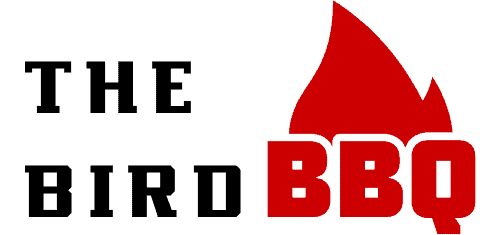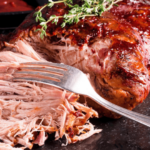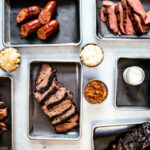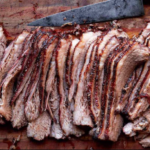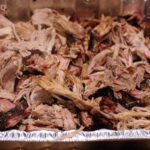How Many Steaks In A Cow? Let’s Count!
Often the idea of how many steaks you can get from a cow is shrouded in a bit of mystery. Many people might think that you can get an unlimited number of steaks from one cow, while others may believe that it is much less than expected. So, let’s find out: How many steaks can you get from a cow? In this article, we will discuss the answer to this common question and examine the myths and facts surrounding the topic.
The commonly-held notion is that you can get an infinite amount of steak when starting with just one cow. This seems to make sense – after all, there are so many different cuts of beef, with each cut needing its own special combination of quality fat and lean muscles. However, this belief is largely incorrect. A single cow cannot provide an infinite amount of meat; rather, it depends on the size and type of beef you are looking for as well as various other factors involved in raising and butchering cows for agricultural production.
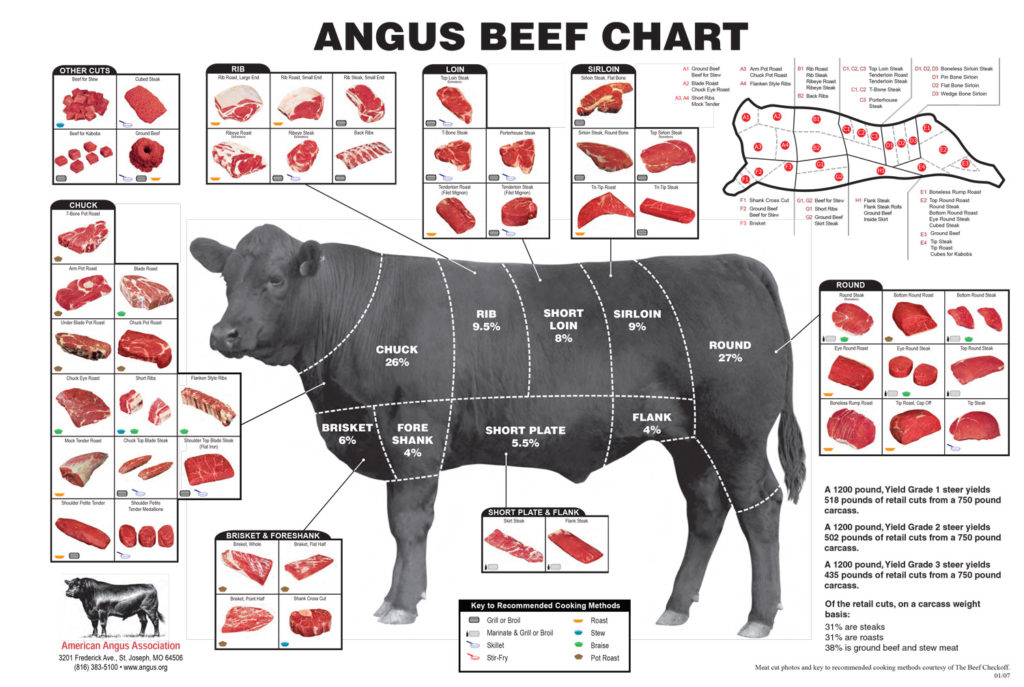
To understand how much steak one can realistically expect out of a single cow, we must first understand what goes into producing beef for mass consumption. Raising cattle requires farmland and specialized equipment such as feeders and pens as well as skilled labor to take care of them over their lifetime – these costs must then be passed along to consumers in order to make it economically feasible for farmers to raise them under safety guidelines designed by governments or industry organizations like The Beef Checkoff Program.
Beside land requirements and capital costs for raising cattle, there are also various other factors including age at slaughter or rate of growth that have an impact on how much steak one should reasonably expect from any given animal – all things considered; it’s estimated that one can usually yield around 420 lbs (190 kg) of steak from one typical bovine animal due to natural shrinkage during processing.
Although certain breeds may offer more meat per animal than others (i.e., Angus cows) depending on their diet and genetics, these figures remain a good indicator in estimating how much steak you could potentially get out of a single cow based upon average forecasts within the beef industry today!
Understanding Beef Cuts and Grocery Store Packages
When purchasing steaks, it can be overwhelming to consider which cut of beef will make for the best meal. Although certain cuts produce more flavorful beef, understanding which packages in the grocery store to look for is just as important. For example, when considering ground beef, there are multiple varieties available. Not all ground beef packages are equal; knowing the difference between packages can help you decide which product is best for your needs.
Porterhouse Steaks
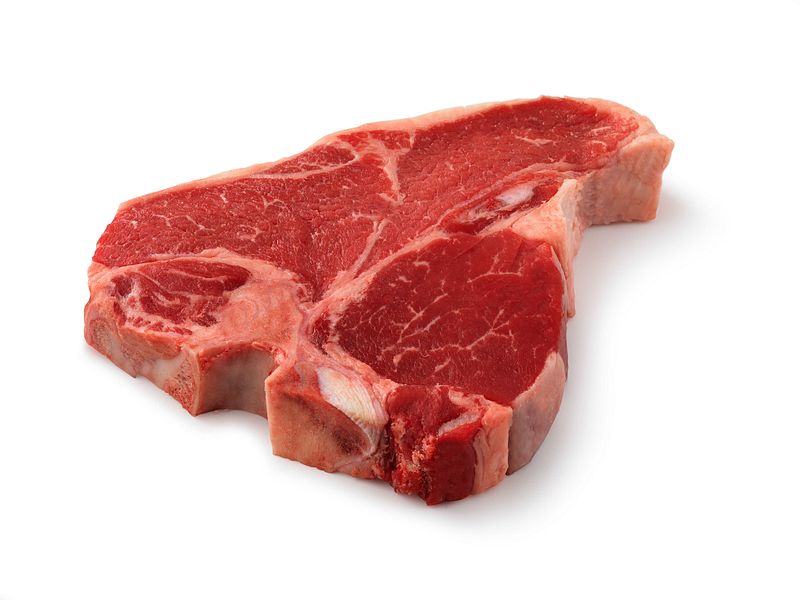
When purchasing beef from a store, you may have heard of porterhouse steaks. These are cut from the center of the cow’s loin and typically include both the tenderloin and strip steak. This cut is usually some of the most flavorful and go-to favorite among steak lovers. Porterhouse steaks are often quite large in size and can weigh up to 2 – 3 pounds each. In terms of getting a certain amount of steaks out of one cow, you could expect to get about 4 – 5 porterhouse steaks for an entire animal.
Because of their size, porterhouse steaks are often more expensive than other cuts. Some stores package these two types of cuts separately, meaning that you will only get one type (strip or tenderloin). That being said, it might be more economical to purchase steak sets that include both types in one package. These packages typically contain anywhere from 4 – 16 steaks with various thicknesses and sizes that can provide enough beef for multiple servings.
Ground Beef
Ground chuck and ground round are common types of ground beef found at the grocery store. Ground chuck contains an amount of fat between 75-80%, making it have a richer flavor. On the other hand, ground round contains a lower fat content – usually around 85% lean – making it a lean option that may not be as rich tasting as ground chuck.
There is also “extra lean” beef available, containing 90% or more lean content; however this option has been found to be less tender and flavorful when consumed. In terms of buying steaks from properties like cow shares or local farmers markets, knowing which cuts come from each part of the animal makes it easier to choose which steak will yield the most steaks or best flavor profile based on what you are cooking and eating.
Ribeye, strip loin and tenderloin cuts come from the rib section of a cow; these kinds of steaks tend to have lots of tenderness and flavor due to their high fat content from marbling throughout the muscle walls. On the other hand, sirloin steaks typically come from either middle back portion (from near where ribs used to be) behind ribs or pelvic area towards tail; these may not be quite as tender since they contain less fat than ribeye and strip loin cuts but still offer great value with robust flavors when cooked properly.
Knowing differences between these two broad categories of cuts helps ensure that consumer know what they’re getting when purchasing directly off a farm or retailer!
Ribeye Steak
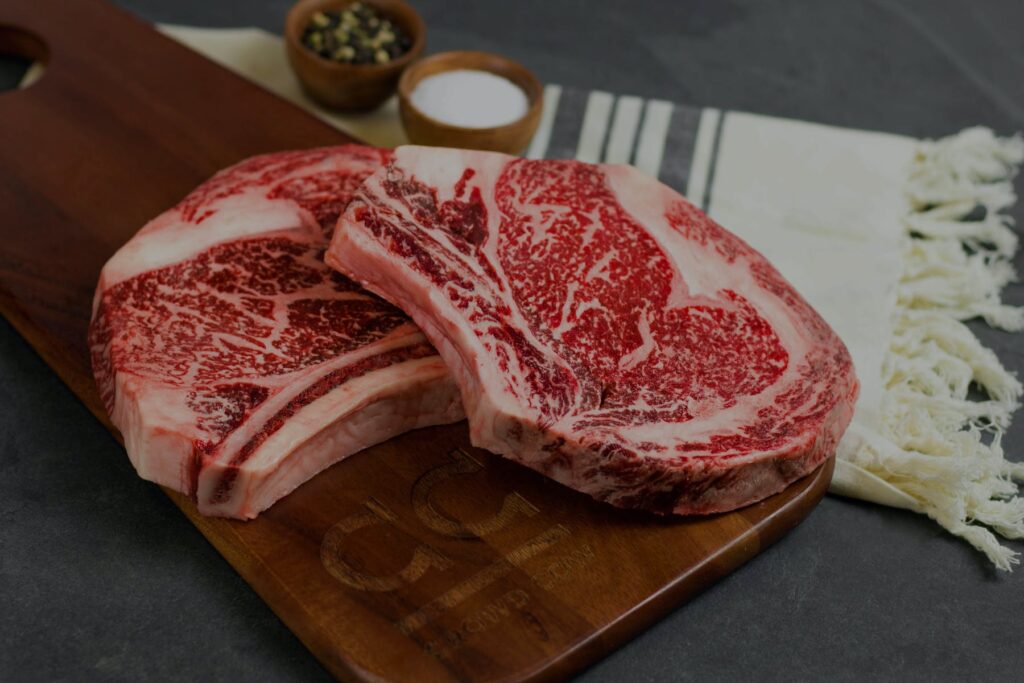
Ribeye steak is considered one of the most flavorful cuts of beef and usually requires minimal cooking. It comes from the rib section of a cow and has an abundance of fat marbling featuring a slightly sweet and buttery taste. Ribeye steaks can be purchased in grocery stores both as individual cuts or already packaged in bulk. Depending on the size of the animal, each cow yields about 11-12 ribeye steaks that weigh between 12-20 ounces each.
Short Ribs
Short ribs are quickly becoming a popular cut of beef, making restaurant menus across the country. They come from the rib portion of the cow and have a marbling of fat that adds flavor to dishes. Depending on its source, one cow can yield between 2-5 pounds of short ribs. Usually, a package in stores weighs 3-4 pounds, so you would need 2 cows to get enough for a large dinner party or gathering. Short ribs are best cooked slowly over low heat to ensure they stay tender and juicy.
T-Bone Steak
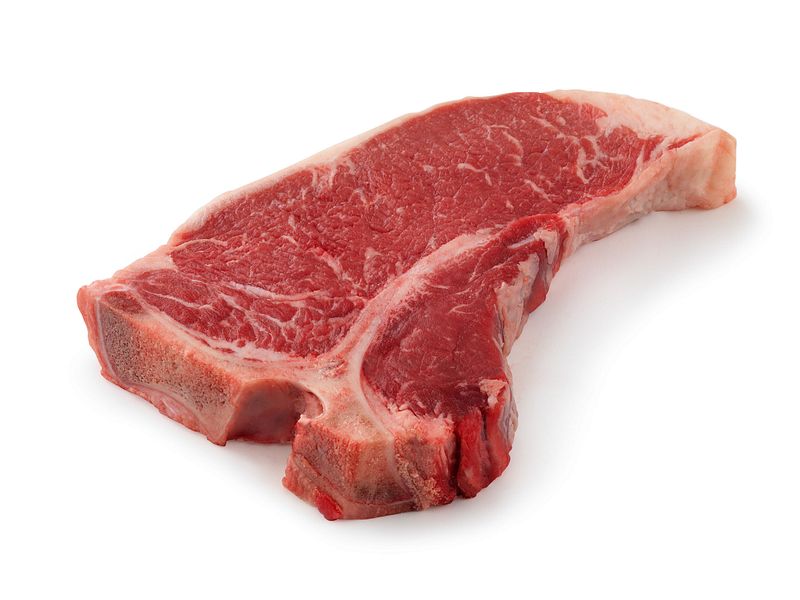
The T-Bone steak is a cut of beef originating from the cattle area just in front of the short loin. It gets its name from the ‘T’-shaped bone found within the steak – this bone divides sections of tenderloin and strip loin. The two different muscles separated by the bone, each offer unique flavors and textures to your steak experience. T-bone steaks are known as one of the tastiest cuts of beef and often contain more fat, making them juicy and flavorful while grilling.
Depending on the cow, a single carcass could yield 4 to 6 T-bone steaks on average, which can last for multiple servings depending on how large you choose to make each one!
Short Loin
The short loin of a cow is located between the sirloin and rib sections. It is a relatively small section of the animal, but it is an important source of steaks. The short loin can yield several types of steak, including porterhouse, T-bone, strip steaks, and filet mignon. Porterhouse and T-bone steaks contain both a strip steak and filet mignon portion separated by a T-shaped bone. Strip steaks are also known as New York or Kansas City strip steak and are often served grilled or pan-fried.
Filet mignon made from the short loin will typically be more tender than other cuts due to its high fat content and thin size. Grocery stores often package these different types of steak together in bulk amounts so that shoppers can purchase several different types at once at a discounted price.
Connective Tissues
When trying to understand how many steaks you can get from a cow, it is important to consider the connective tissues – such as muscle mounts, gristle and fat – that are found in beef cuts. These tissues must be worked through with a butcher knife before steaks can be cut from a carcass. It takes skill and knowledge to remove these tissues in the most efficient manner and this accounts for some of the variation in steak yields from one cow to another.
In addition to understanding how connective tissues influence steak yields, it is also necessary to consider how steaks are packaged for sale at the grocery store or butcher counter. Generally speaking, packages usually contain enough meat for two servings. Some packages might contain slightly more than two servings since butchers prefer allowing their customers to receive more product than they pay for-an added bonus!
Furthermore, some grocery stores offer thicker steaks which yield fewer servings per package when compared with the thinner cuts offered at the butcher counter. This is yet another factor that must be taken into consideration when estimating steak yields from a single cow.
While it’s impossible to estimate exact numbers without knowing exactly what types of cuts and thicknesses are being used, consumers can have an approximate idea of cake yields by factoring in all the variables listed above. By doing so, people can get closer to understanding how many steaks they can realistically expect from a cow-and use that information when budgeting or planning meals!
Sirloin Steaks
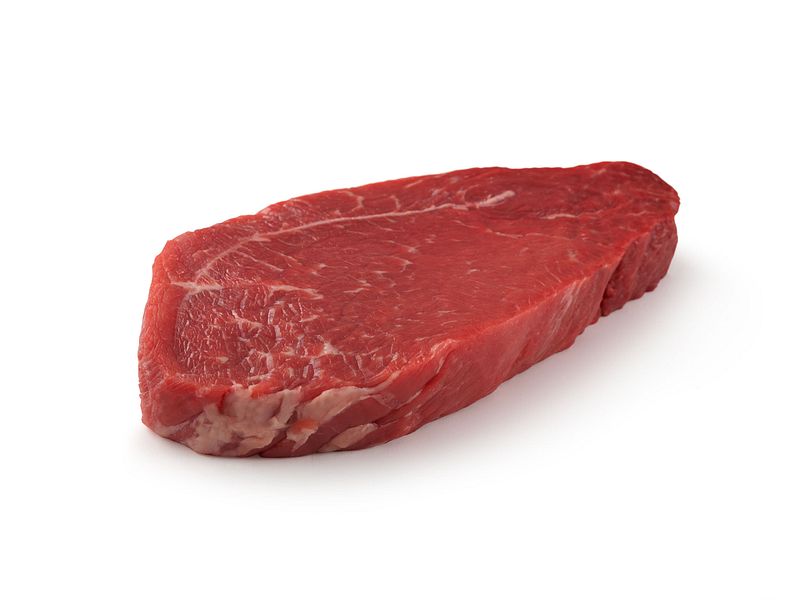
Sirloin steaks are a type of steak cut from the sirloin primal, which lies along the back of the cow. These steaks are known for their juicy flavor due to the marbling throughout the cut. Sirloin steaks can be grilled, pan-fried, or broiled, making them extremely versatile and popular among home cooks. Depending on how much meat is taken from that sirloin primal and which portion of it is utilized, you may get different types of sirloin steak such as top sirloin butt steaks, pin bone steaks, flat iron steaks and others.
Generally speaking, you can expect to get between 4-6 sirloin steak packages from an entire cow on average.
Retail Cuts vs. Butcher Shop Cuts
When it comes to beef, a cow offers a wide variety of cuts of steak that can be purchased from a grocery store or from a butcher shop. At the grocery store, bulk packs of steaks, often with multiple “score” and thickness options, are generally priced by the pound. Butchers tend to offer more specific cuts and steak packages based on individual preference, but they come with higher prices due to the more expensive labor involved in custom cutting.
To get an estimate of how many steaks you can expect to get out of a cow, you need to know what type of cut is being used. If the cow is being processed into retail cuts like ribeye steak, sirloin steak and strip steak then their weights will vary widely depending on the size and shape of the particular animal. Generally speaking though, you will usually be able to purchase an average of six ribeye steaks from one cow; four sirloins and two strip steaks from one cow; and eight New York strip steaks from one cow.
At the butcher shop, an average side (1/2) of beef would produce around 35 individual portion-sized steaks if all were boneless and uniformly cut at 1 inch thick; however most butchers will offer special requests regarding thicker or thinner cuts which would affect the overall quantity. Additionally, some traditional butchers prefer bone-in cuts which adds an extra few pounds per side. As such, customers looking for customizable beef cuts should always consult their butcher regarding exact numbers before purchasing a whole or half cow for processing.
Different Types of Cows and their Flavor Profiles
The type of cow that a steak comes from can have a huge impact on its flavor. Different breeds of cattle provide different flavors, so the way you cook and season your steak will depend largely on which cow it came from.
Angus
Angus is one of the most popular types of beef cattle in North America. The meat has high marbling and a robust flavor, making it a great choice for steak. On average, you can get nine to 12 steaks from an Angus cow depending on the size and breed. It’s also known for its less grain-heavy diet which leads to more intense flavors and quicker marbling. Due to its higher quality, Angus beef is usually quite expensive; however, it’s worth the cost if you’re looking for quality steak.
Hereford
Hereford cattle are known for their white faces and red bodies and are often used as farm animals around the world. Their meat is not as highly marbled as Angus but still has good fat content; making them ideal for roasting or steak cuts. Generally speaking, Hereford cows produce about seven to 10 steaks over its lifespan due to its smaller size compared with other breeds which have higher yields. Despite their leaner fat content compared to other breeds, Hereford cows are well known for their strong beefy flavor which makes them a great choice when cooking steak dishes.
Wagyu
Wagyu (or Japanese beef) is perhaps one of the most famous types of beef in the world because of its intense flavor profile. Wagyu cows are known for being fed high-quality grain diets that lead to excellent marbling that melts during cooking producing an amazing taste experience. While you won’t get as many steaks from Wagyu due to its cost per kilo, it’s worth paying extra since you will ultimately get a more intense flavoring experience when eating your steak dishes due to the higher marbling content.
Approximately four to six steaks can be gained from a single Wagyu cow depending on size and age; however this could vary according to cutting techniques used by butchers upon slaughtering or preparing the cow for market sale.
Other popular breeds include Limousin, Charolais, Dexter and Devon, which all offer different profiles in terms of taste and texture.
The same cow can produce different types of steaks depending on where it’s cut from – whether its ribeye, sirloin or tenderloin – offering even more variation in both flavor and texture. All these factors contribute to the unique profile that each breed has to offer when it comes to steak flavor. With the right cooking method coupled with the perfect accompaniments and seasonings, there are plenty of delicious combinations that can be explored with steak from various cows!
Calculating the Number of Steaks from a Whole Cow
When it comes to understanding how many steaks can you get from a cow, the answer isn’t quite as simple as counting how many steaks you will get. The exact number depends on several factors such as the size and type of cow, the butchering process, what parts of the cow are used to make the steak, etc. That’s how we calculate the number of stakes using unit economics.
Lbs of Steak Per Cow
Generally speaking though, a single beef cow can typically yield up to 600 pounds of steak cuts. This means that if a butcher uses about 30% of the carcass for steaks, you can generally expect around 180 pounds of steaks from one cow. To put that into perspective, that’s enough steak to serve over 200 people!
179-180 pounds of steaks is an impressive amount of meat, yet this number doesn’t take into account several other factors that may affect the overall amount of steak one could potentially get from a single cow. For example, if individual customers at a restaurant place more loaded orders for specific cuts, then more meat would need to be allocated in order to fulfill each order which would ultimately mean fewer steaks overall.
Additionally, depending on how much fat and excess tissue exists on any given piece of meat, some parts might not yield as much usable steak which could also lower the overall amount yielded by an entire cow.
Types of Meat Available from a Whole Cow
A whole cow can provide a range of different types of meat. In general, a cow typically yields around 915 to 1,100 pounds of usable meat after it is butchered. This total usable amount can be broken down into several different varieties: ribeye steaks, T-bone steaks, sirloin steaks, chuck roasts, stew beef, ground beef, and brisket.
The number of steaks you could get from a single cow varies based on the thickness and size of the steaks desired. However, a rough estimate would be around 20-25 ribeye steaks and 50 T-bone steaks from a whole cow if cut traditionally into thicker steak cuts. By cutting the beef more thinly or using typical restaurant portion sizes for steak cuts, these numbers can double or triple accordingly.
In addition to steaks and roasts, other products like ground “hamburger” can also be made from a single cow’s worth of usable meat. It takes approximately 35 pounds of beef to make 25 pounds of ground hamburger at an 80/20 fat ratio! Furthermore, many specialized butcher shops also offer further products such as jerky, salami sausage links/patties and hot dogs that are produced from a single cow’s worth of usable meat as well.
Quarter Cow vs. Half Beef vs. Whole Beef
It’s no secret that one of the best ways to save money while enjoying quality cuts of steak is to buy a whole or half cow directly from a local rancher. But just how much meat are we talking about? Let’s take a look at the average number of steaks from various sizes of beef.
When buying a quarter cow, you can expect to get approximately 8-10 steaks per package. This amount usually comes in four packages and will include ribeye, sirloin, chuck roast and round roast, as well as ground beef in bulk. Buying a half cow will give you upwards of 40 steaks depending on the size and breed of your beef source – it all comes down to cutting preference. Most often you will get ribeye, sirloin, chuck roast, brisket, shank and round roast.
Additionally, you might also be able to get stew meat, soup bones and organ meats like liver. Ground beef typically comes in bulk packages with this type of purchase as well.
Finally, with a whole cow purchase you could make anywhere between 80-100 steaks depending on how it is butchered. Here you can find value-cut steaks like flank steak along with most other types listed above. The cost savings here is considerable when compared to buying cuts at your local grocery store retail price. Plus you will have plenty left over for burger patties or stew meat if desired!
Different Cuts of Beef and Their Uses
When talking about the potential number of steaks you can get from a cow, it all depends on what type of steak you’re looking for. Depending on the size of the cow, there are typically between 12 to 24 different cuts of beef that can be used for steak, with an average amount being around 18. To put this into perspective, these cuts range from ribeye and tenderloin to flank and skirt steak.
The more popular cuts are sirloin, ribeye and t-bone which tend to be the most desired among steak lovers. Each cut of beef has its own unique flavor profile and desired cooking methods. While some prefer their steak seared on the grill or griddle over high heat, others prefer a slower cooked piece in a cast iron pan or slow roasted in the oven. Knowing how much steak variety you can get from a cow is useful if you are looking to buy meat in bulk, such as whole cows or sides of beef.
This will help you figure out ways to use different types of steaks rather than eating the same one every week. Additionally, it’s important to note that there are many other uses for each cut besides just making steaks – from stews and burgers, to casseroles and stir frys – meaning that even after using all 18 possible steaks from one cow, there could still be loads of possibilities for creating delicious meals!
Fat Content in Different Cuts of Beef
In order to find out how many steaks can be obtained from a whole cow, it is important to consider the kinds of cuts of beef that are available and their fat content. The most popular steak cuts come from the rib (such as ribeye), loin (such as New York strip or porterhouse), and sirloin. Depending on the size of cattle and whether there are other meats being used, one may be able to get up to 12 steaks from these three main cuts in total.
Additionally, individual steaks will come in different sizes; those near the shoulder tend to have more fat for added flavor and tenderness, while leaner choices are available near the back legs or under the ribs. The fat content in different cuts of beef also has an impact on quality; for example, rib eye steak has higher fat content than filet mignon and sirloin has more fat content than flank steak. Understanding this will help determine how many steaks one can expect from an individual cow.
Estimating Freezer Space Needed for a Whole Cow
The average cow can provide up to 500 pounds of meat, but how much of that is steak? Steaks are typically cut from the higher-value cuts of beef, meaning there won’t be as many steaks from a single cow. But with careful cutting and dividing, it’s possible to get a good idea of just how much steak you will get from a single beast. Generally speaking, you can expect anywhere between 25 and 75 steaks from a typical cow.
This number varies based on several factors such size of the cow, the skill of the butcher and how thickly or thinly you choose to slice your steaks. Additionally, the type of steak desired also plays a role – Ribeye steak requires more generous cuts than skirt steak for instance.
When buying an entire cow, it’s important to plan ahead and consider how much freezer space will be needed to store all those delicious steaks! A common approximation is that one cubic foot of freezer space can suffice for around 18-20 pounds of beef. Armed with this knowledge, you can easily calculate the amount of space you’ll need to store all the delicious steaks your cow yielded (allowing for some shrinkage during cooking).
How about cooking options? You could traditional methods like grilling or broiling; however, different cuts may require different approaches – brisket is great for slow cooking while sirloin should just be pan fried! When it comes time to cook up those delicious and fresh steaks from your cow, make sure you have the perfect method and seasonings in mind for maximum flavor!
Cost Comparison: Buying Whole Beef vs Individual Cuts
The cost of purchasing high-grade beef from a local butcher or grocery store isn’t typically cheap, making it difficult for budget-conscious consumers to enjoy the occasional steak dinner. But what about buying an entire cow? By doing so, you’re guaranteed to get an abundance of good quality ingredients at a fraction of the price. To show just how much money you can save by investing in a whole cow, let’s compare the costs of getting individual cuts versus buying in bulk!
Let’s examine the number of steaks that can be purchased for one pound of beef. Depending on the cut, you can get anywhere between four and eight steaks per pound when buying individually. Alternatively, buying a whole cow may yield sixteen steaks per pound or even more depending on its size and grade. This means that you would receive twice as many steaks just by purchasing the entire cow instead!
Now let’s talk about cost comparison. If we look at the cost of an average Rib-Eye steak in your local grocery store (around $10/lb), then we would be paying $40 for 4 single cut rib-eye steaks – far higher than what it would cost to purchase the same amount wholesale from a farm. In addition, larger farms have significantly lower prices compared to retail stores because they don’t have to consider marketing and transportation fees. Purchasing your own cow would give you access to top quality cuts at prices that are more than 40% lower than those found in stores – not to mention freshness that simply cannot be beat!
Therefore, when it comes down to which option is better – buying individual cuts or whole beef – it’s clear why many people choose opting for whole beef; not only do you get more bang for your buck quantity wise but also quality wise!
Summary: Can you count how Many Steaks in A Cow Now?
After counting the various cuts of steak that a single cow can provide, it’s safe to say that you will be able to get a decent amount of steaks from just one cow. Depending on the butchering technique and quality of the animal, a well-butchered cow can provide up to 170 – 200 pounds of stakes, which make:
- 20-24 Ribeye Steaks
- 20-24 Strip Steaks
- 18-22 Filet
- 18-22 Sirloin Steak
- 14-18 Roast
- 14-18 Short Ribs
In total providing 100 individual cuts of steak for your enjoyment. You can also get two tenderloin filets as well as other boneless and bone-in steak pieces—all adding up to an impressive final count of 130 separate pieces of steak! That’s pretty amazing considering that all these cuts are coming from only one animal! So if you’re looking to stock up on some delicious steaks and hamburger patties then consider getting yourself a cow: you won’t regret it!
This long video (37 minutes) will explain in detail on every cut of beef and make you understand better my equation and speculation on how many steaks on a cow we can get.
More BBQ Party Plan Resource
How Long Can You Keep Pulled Pork Fresh? Expert Tips and Tricks
BBQ Party: How Much BBQ to Feed 100 Guests? (Precise Calculation)
Ultimate Guide to Throwing a Large BBQ Party: Tips, Tricks, and Ideas
How Much Brisket to Feed 50 People: A Chef’s Guide
How Much Pulled Pork for 40 People (Easy Guide)
This article is a part of The Ultimate Steak Cookbook, our ever-growing mini encyclopedia on techniques for delicious steak recipes. Please bookmark and return. There will be a lot of useful information for you.

Shara @The Bird BBQ
Shara loves to experiment with different flavors and techniques when it comes to BBQ. She has been perfecting her craft for years and loves hosting backyard BBQs with friends & family. She often comes up with creative recipes that her guests rave about.
